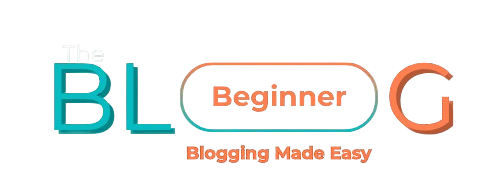On-Page SEO for Beginners: How to Optimize Your Blog Posts for Google (Step-by-Step)
Table of Contents
You wrote a great blog post — now what?
To help it rank on Google, you need to do on-page SEO.
It’s the art of making each page or post search-engine friendly — so Google knows what it’s about and who to show it to.
In this beginner guide, we’ll walk you through exactly how to optimize your content using simple, proven steps 🧩✨
📚 1. What Is On-Page SEO?
On-page SEO is everything you do within a blog post or page to help it rank higher:
- Choosing the right keywords
- Writing a clear title and description
- Using proper formatting (headings, lists, images)
- Adding internal and external links
- Improving readability and structure
It’s about helping Google and your readers at the same time.
🔑 2. Use a Focus Keyword Strategically
Choose one main keyword for each post.
Use it naturally in:
- Post title (H1)
- URL slug
- Meta description
- First 100 words
- Headings (H2/H3)
- Image alt text
🎯 Example:
Focus keyword = “email marketing tips”
Use it in:
https://yourblog.com/email-marketing-tips
📌 Learn how to find keywords in our Keyword Research Guide
🧠 3. Write a Compelling SEO Title (H1)
This is the first thing readers — and Google — see.
Tips:
- Include your keyword
- Keep it under 60 characters
- Use “power words” (like simple, proven, ultimate)
✅ Example:
“Email Marketing Tips for Beginners: Simple Strategies That Work”
📝 4. Add a Strong Meta Description
This shows in Google search results under your title.
Tips:
- Include the focus keyword
- Keep it under 160 characters
- Make it sound natural and clickable
📌 Rank Math SEO makes it easy to customize this.
📋 5. Structure Your Content With Headings (H2, H3)
Break up your content using proper headings:
- H2 for main sections
- H3 for subpoints inside those sections
This helps:
- Readers scan your post easily
- Google understand your content structure
🎯 Bonus: Use keywords in at least one H2 heading.
🔗 6. Add Internal & External Links
- Internal links = link to other posts/pages on your blog
- External links = link to trusted sources (tools, studies, etc.)
💡 Internal linking helps Google crawl your site and keeps visitors engaged.
📌 Try linking to:
🖼️ 7. Optimize Images with Alt Text
Every image should have descriptive alt text.
Why?
- Helps with accessibility
- Gives Google context
- Can show your images in Google Image search
✅ Example:
Alt text = “Screenshot of Rank Math SEO plugin settings”
📱 8. Improve Readability and Formatting
People don’t read — they scan.
Tips:
- Use short paragraphs (2–4 lines)
- Add bullet points and lists
- Highlight key phrases (bold or italic)
- Keep font size at least 16px
📌 Tools like Rank Math and Yoast give you a readability score — aim for green!
✅ Final Thoughts
On-page SEO isn’t about “tricking” Google — it’s about helping both search engines and real humans.
Just remember:
- Use keywords naturally
- Keep things clear and scannable
- Link, format, and structure smartly
📌 Next: Let’s explore Off-Page SEO and learn how to grow your blog’s authority beyond your site.
